A tortoise is a slow-moving, long-lived reptile known for its hard, dome-shaped shell that protects its body. Unlike turtles, which are more adapted to life in water, tortoises are primarily land-dwellers. They can be found in a variety of habitats, including deserts, grasslands, and forests, and they have strong, thick legs built for walking on land rather than swimming.
Tortoises are herbivores, meaning they mostly eat plants like grasses, leaves, and fruits. Some species, like the giant Galápagos tortoise, will also munch on cactus pads or other tougher plants.
Scientific Classification
-
Kingdom: Animalia
-
Phylum: Chordata
-
Class: Reptilia
-
Order: Testudines
-
Family: Varies (many families under the order)
-
General Name: Tortoise refers to land-dwelling turtles with domed shells
There are dozens of tortoise species around the world, adapted to various dry and grassy environments.
Common Names
-
Tortoise (general name)
-
In Yoruba: Ijapa
-
In Igbo: Mbe
-
In Hausa: Kunkuru
Tortoises are often seen in African folktales as clever and wise — outsmarting faster animals like the hare.
Geographic Distribution
Tortoises are found on every continent except Antarctica:
-
Africa (e.g. African spurred tortoise)
-
Asia
-
Southern Europe
-
North and South America
-
Islands like the Galápagos and Seychelles
They prefer dry grasslands, deserts, savannas, and sometimes tropical forests.
Physical Characteristics
Tortoises are easy to recognize with their signature hard shells and slow steps:
-
Shell: Domed and bony, used for protection
-
Feet: Short and strong with thick, elephant-like toes for walking
-
Head & Neck: Can pull inside the shell for safety
-
Movement: Very slow, but strong and steady
-
Size: Can range from a few inches to over 1 meter in length
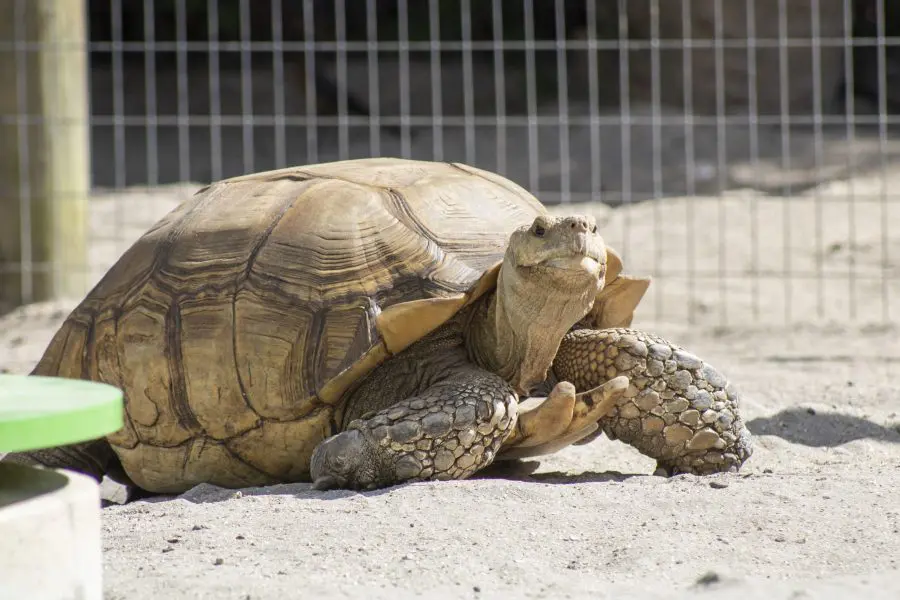 Image showing a large African spurred tortoise (Source: Brevard Zoo)
Image showing a large African spurred tortoise (Source: Brevard Zoo)
Major Types of Tortoises
1. African Spurred Tortoise (Centrochelys sulcata)
Also called the Sulcata Tortoise, it’s the largest tortoise species in mainland Africa.
-
Size: Can grow over 80 kg (176 lbs)
-
Lifespan: 50–100 years
-
Habitat: Dry deserts and savannas of West and Central Africa
-
Diet: Grasses, leaves, and dry plants
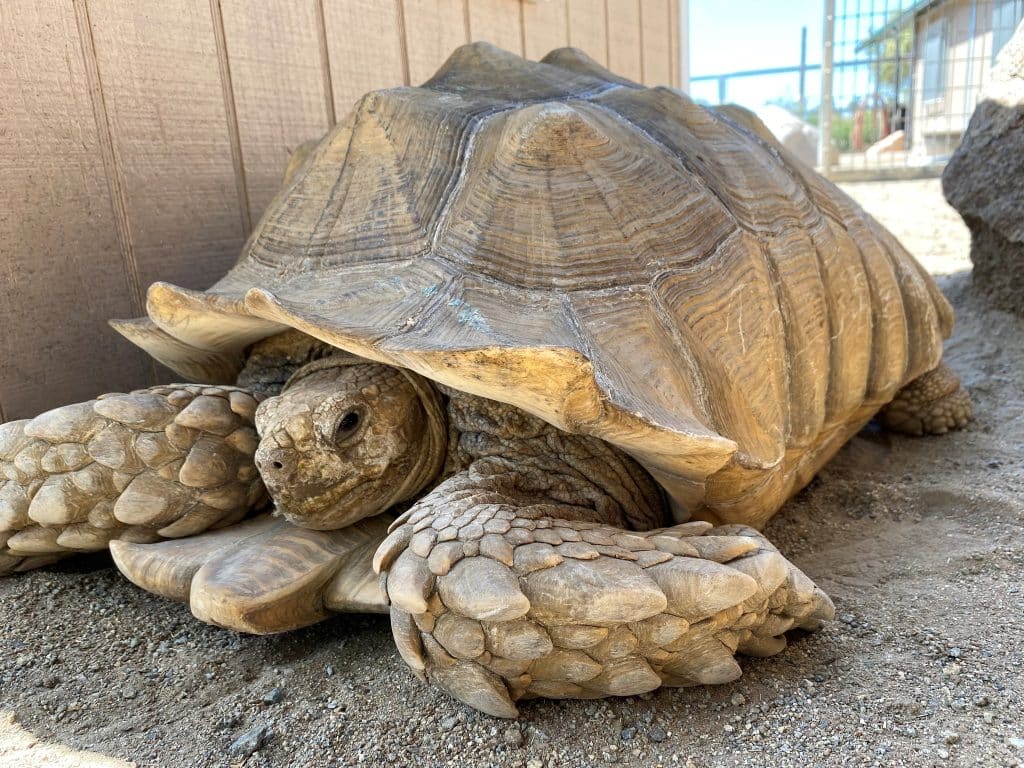 Image showing a sulcata tortoise (Source: Lions, Tigers And Bears)
Image showing a sulcata tortoise (Source: Lions, Tigers And Bears)
2. Galápagos Tortoise (Chelonoidis nigra)
One of the largest and longest-living tortoises in the world.
-
Location: Galápagos Islands
-
Weight: Up to 400 kg (880 lbs)
-
Lifespan: Over 100 years (some even reach 150+)
-
Status: Vulnerable due to past hunting and habitat changes
 Image showing a giant Galápagos tortoise on green grass (Source: SA Vacations)
Image showing a giant Galápagos tortoise on green grass (Source: SA Vacations)
3. Leopard Tortoise (Stigmochelys pardalis)
-
Region: Eastern and Southern Africa
-
Size: Medium to large (up to 40 kg)
-
Shell Pattern: Beautiful black and yellow “leopard-like” spots
-
Diet: Grasses and succulents
-
Status: Stable but vulnerable to habitat loss
Known for its attractive shell, making it a target for illegal pet trade.
Image showing a leopard tortoise (Source: Zoo Med)
4. Aldabra Giant Tortoise (Aldabrachelys gigantea)
-
Region: Aldabra Atoll, Seychelles (Indian Ocean)
-
Size: Up to 250 kg
-
Shell: Smooth, domed, dark grey
-
Lifespan: 100+ years
-
Status: Vulnerable, but protected on the islands
Second largest tortoise in the world after the Galápagos tortoise.
Image showing an aldabra tortoise (Source: Wikipedia)
5. Indian Star Tortoise (Geochelone elegans)
-
Region: India, Sri Lanka, and parts of Pakistan
-
Size: Small to medium (1–2 kg)
-
Shell: Star-like yellow patterns on a dark background
-
Diet: Fruits, leaves, grasses
-
Status: Vulnerable, heavily trafficked for illegal pet trade
Beautiful but delicate. Often suffers in captivity due to improper care.
Image showing an indian star totoise (Source: Wikipedia)
6. Russian Tortoise (Agrionemys horsfieldii)
-
Also called: Horsfield’s Tortoise
-
Region: Central Asia, Russia, Uzbekistan, Afghanistan
-
Size: Small (15–25 cm)
-
Shell: Flattened and round
-
Lifespan: 40–60 years
-
Status: Common in pet trade, but wild populations are declining
Hardy and popular as a beginner’s pet in cooler climates.
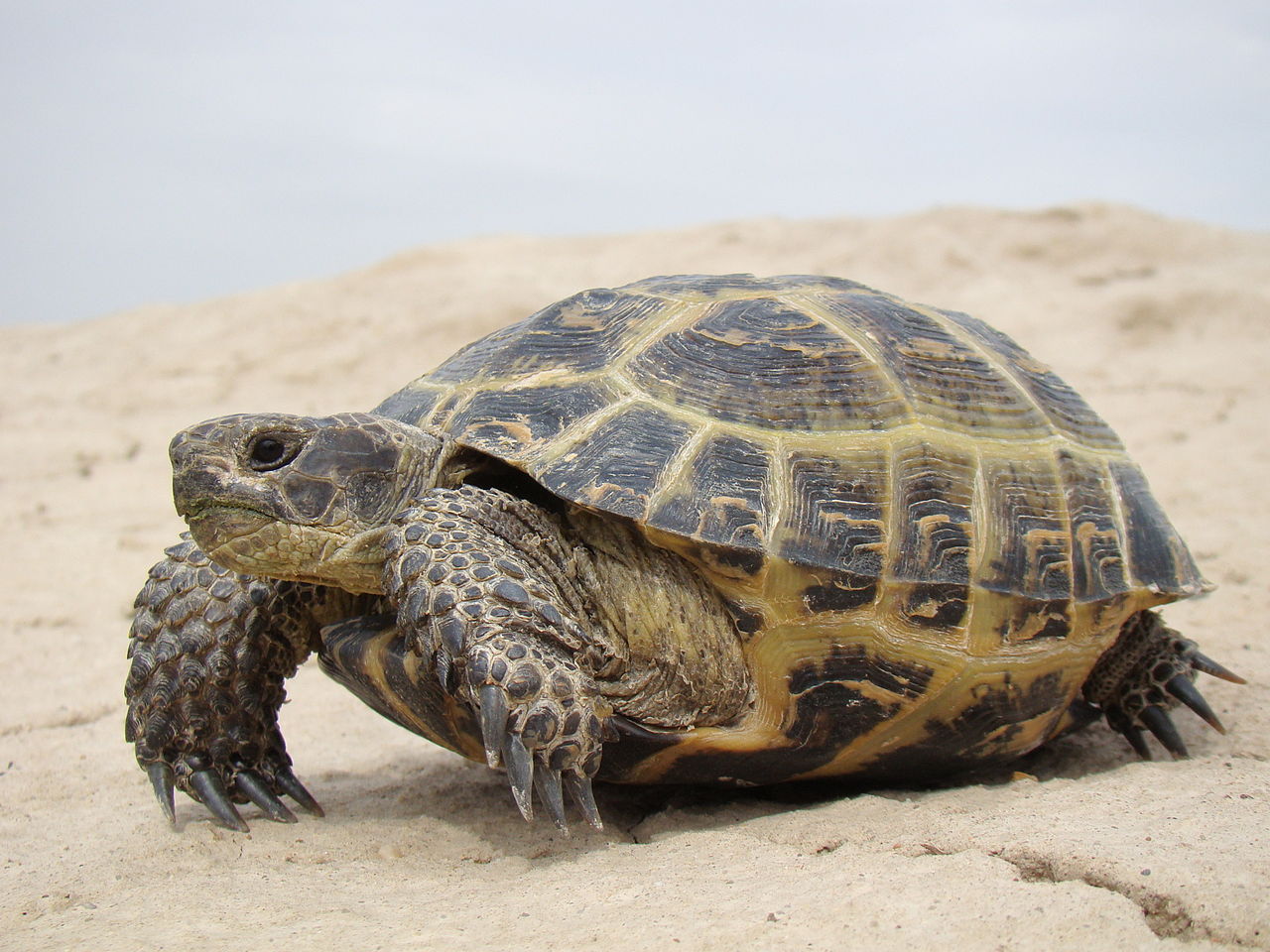 Image showing a russian tortoise (Source: Redbrick)
Image showing a russian tortoise (Source: Redbrick)
7. Egyptian Tortoise (Testudo kleinmanni)
-
Region: Egypt and Libya (North Africa)
-
Size: Very small (under 15 cm)
-
Shell: Pale yellow or cream
-
Status: Critically endangered, due to habitat destruction and over-collection
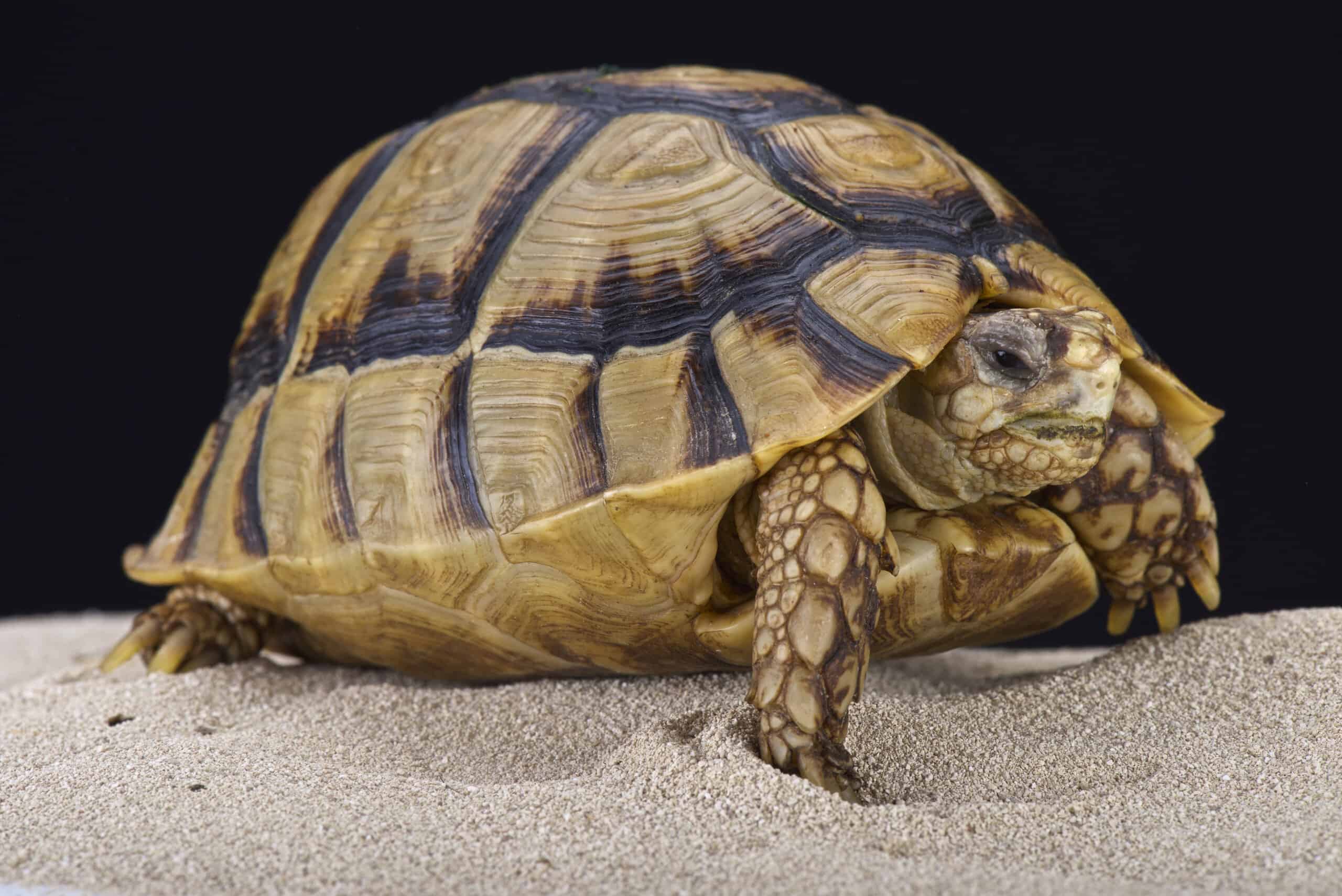 Image showing an Egyptian tortoise (Source: A-Z animals)
Image showing an Egyptian tortoise (Source: A-Z animals)
Fun facts about Tortoises
-
Tortoises can’t swim, they live only on land, unlike turtles.
-
Their shells are made of bone and grow with them, they never shed them.
-
Tortoises don’t have teeth but use sharp beaks to bite plants.
-
They are cold-blooded, so they survive in the sun to stay warm.
-
Some tortoises have been alive longer than many humans.
Importance to nature & humans
-
Tortoises help control plant overgrowth by feeding on grasses and weeds.
-
Their digging behavior helps aerate the soil and create burrows for other animals.
-
In many cultures, they are symbols of wisdom, protection, and longevity.
Health & common issues
Whether wild or in captivity, tortoises need proper care to stay healthy:
-
Dehydration: Tortoises need access to water, even in dry climates.
-
Shell injuries: From falls, predators, or cars.
-
Respiratory infections: Often caused by cold, damp conditions.
-
Mouth rot and parasites: Especially in poorly kept pets.
Important: If you find an injured tortoise, do not flip it or pour water on it suddenly. Keep it calm and bring it to a wildlife vet like Doctor Hulk Veterinary Hospital for proper care, or call 08143397614.
Conservation Status
Many tortoise species are now endangered or vulnerable due to:
-
Illegal wildlife trade
-
Habitat destruction (deforestation, land clearing)
-
Hunting for meat or traditional medicine
To help tortoises survive, we must protect their natural habitats, educate communities, and report illegal trade.
Tortoise vs Turtle
| Feature | Tortoise | Turtle |
|---|---|---|
| Habitat | Land | Mostly water (fresh or sea) |
| Shell Shape | Domed and heavy | Flat and streamlined |
| Feet | Stumpy, elephant-like | Webbed for swimming |
| Swimming Ability | Cannot swim | Excellent swimmers |
| Lifespan | 50–150 years | 20–80 years |








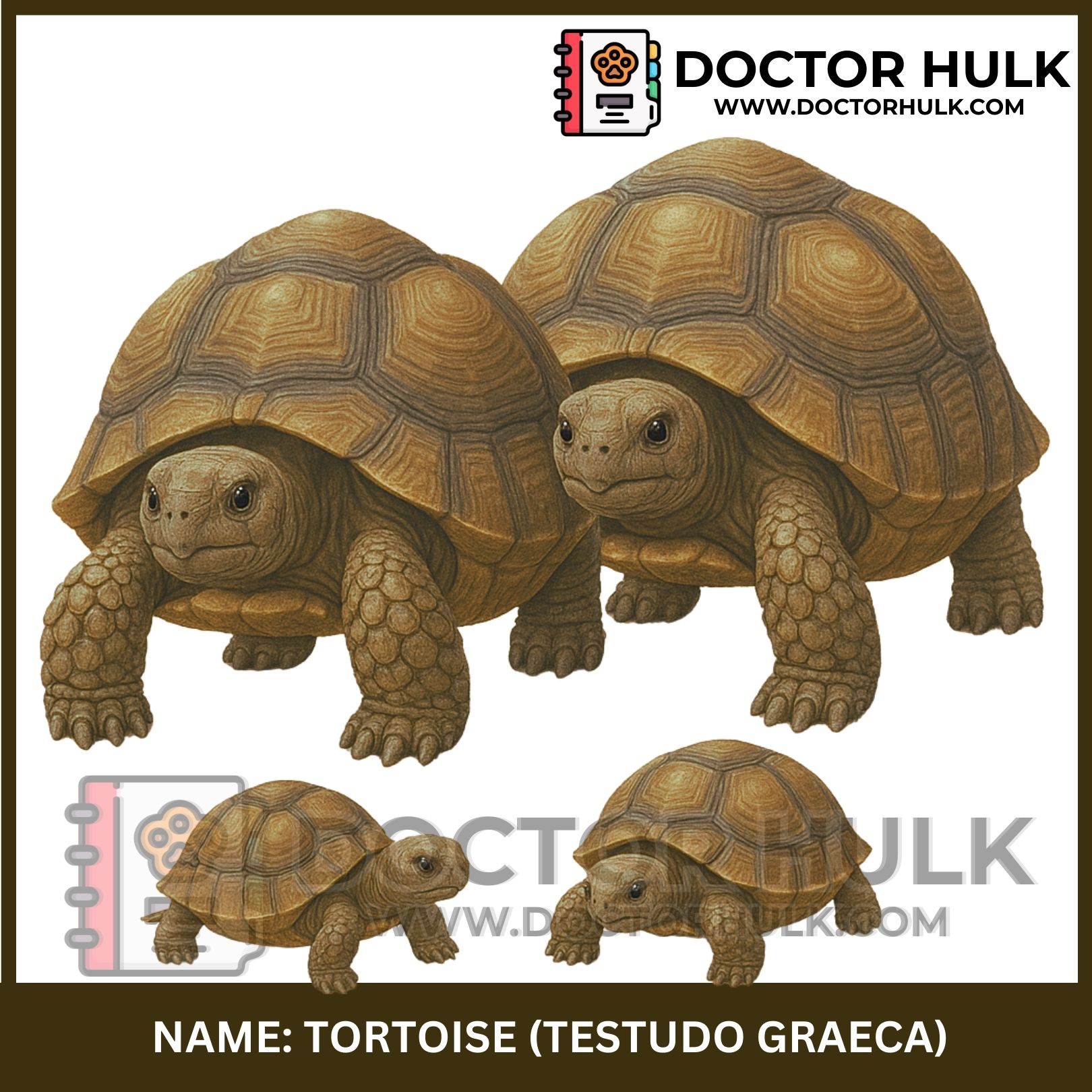
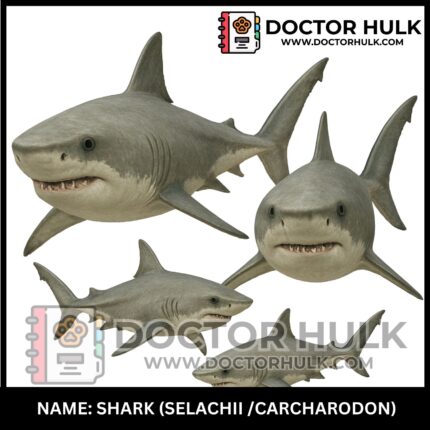
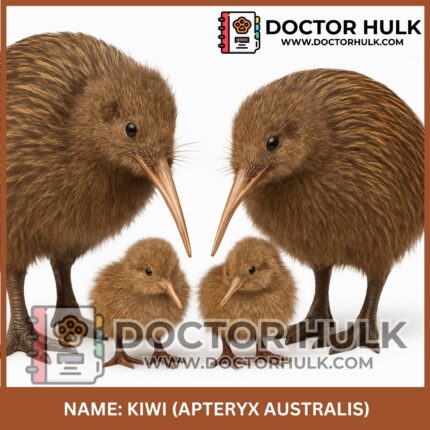


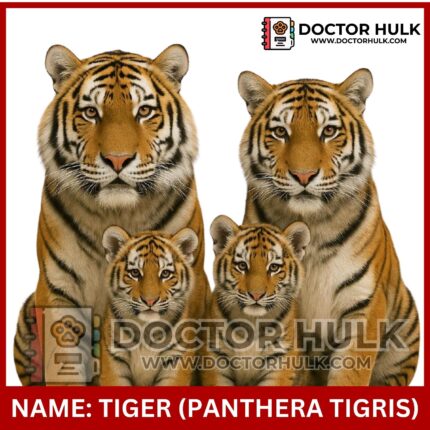
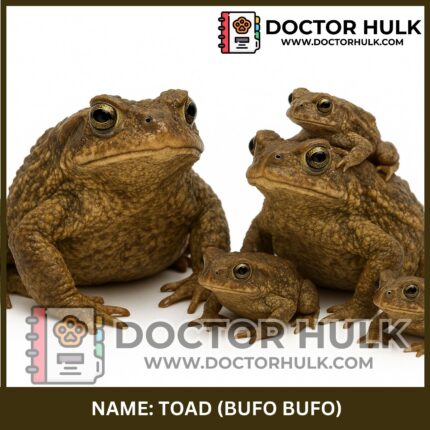
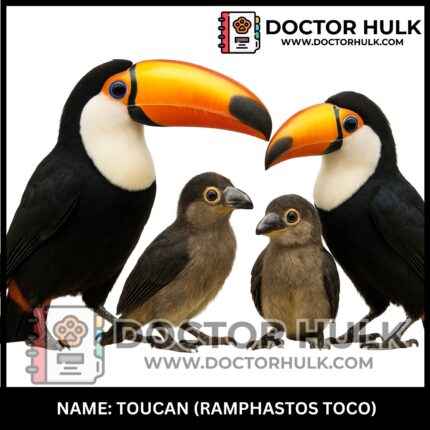
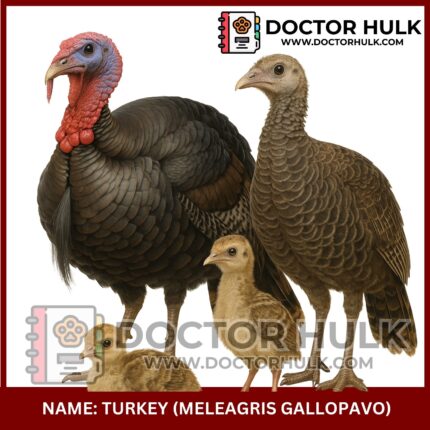
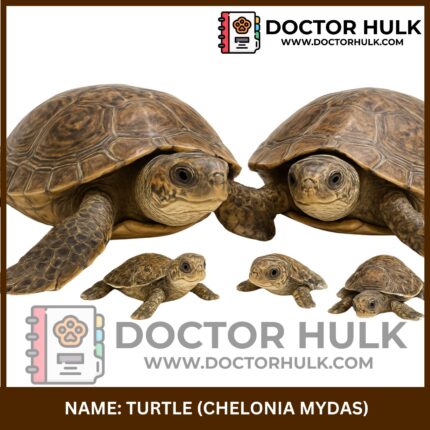

Reviews
There are no reviews yet.